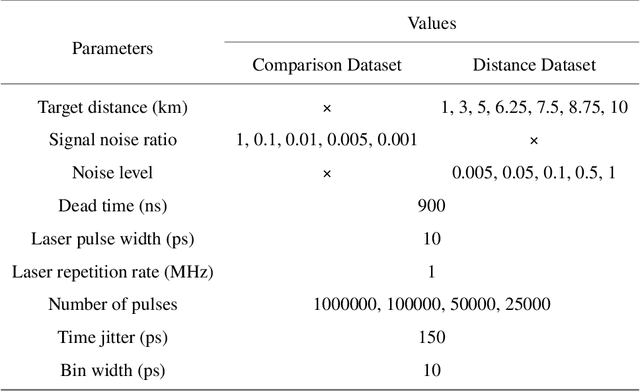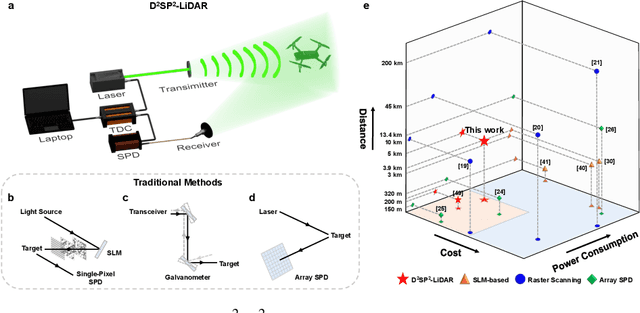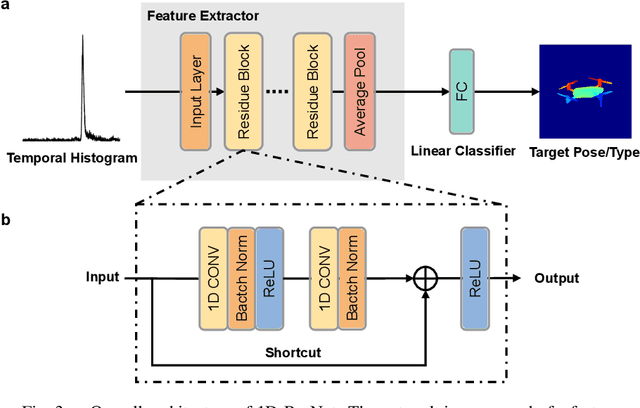Ye Chen
3DProxyImg: Controllable 3D-Aware Animation Synthesis from Single Image via 2D-3D Aligned Proxy Embedding
Dec 19, 2025Abstract:3D animation is central to modern visual media, yet traditional production pipelines remain labor-intensive, expertise-demanding, and computationally expensive. Recent AIGC-based approaches partially automate asset creation and rigging, but they either inherit the heavy costs of full 3D pipelines or rely on video-synthesis paradigms that sacrifice 3D controllability and interactivity. We focus on single-image 3D animation generation and argue that progress is fundamentally constrained by a trade-off between rendering quality and 3D control. To address this limitation, we propose a lightweight 3D animation framework that decouples geometric control from appearance synthesis. The core idea is a 2D-3D aligned proxy representation that uses a coarse 3D estimate as a structural carrier, while delegating high-fidelity appearance and view synthesis to learned image-space generative priors. This proxy formulation enables 3D-aware motion control and interaction comparable to classical pipelines, without requiring accurate geometry or expensive optimization, and naturally extends to coherent background animation. Extensive experiments demonstrate that our method achieves efficient animation generation on low-power platforms and outperforms video-based 3D animation generation in identity preservation, geometric and textural consistency, and the level of precise, interactive control it offers to users.
Neural emulation of gravity-driven geohazard runout
Dec 18, 2025Abstract:Predicting geohazard runout is critical for protecting lives, infrastructure and ecosystems. Rapid mass flows, including landslides and avalanches, cause several thousand deaths across a wide range of environments, often travelling many kilometres from their source. The wide range of source conditions and material properties governing these flows makes their runout difficult to anticipate, particularly for downstream communities that may be suddenly exposed to severe impacts. Accurately predicting runout at scale requires models that are both physically realistic and computationally efficient, yet existing approaches face a fundamental speed-realism trade-off. Here we train a machine learning model to predict geohazard runout across representative real world terrains. The model predicts both flow extent and deposit thickness with high accuracy and 100 to 10,000 times faster computation than numerical solvers. It is trained on over 100,000 numerical simulations across over 10,000 real world digital elevation model chips and reproduces key physical behaviours, including avulsion and deposition patterns, while generalizing across different flow types, sizes and landscapes. Our results demonstrate that neural emulation enables rapid, spatially resolved runout prediction across diverse real world terrains, opening new opportunities for disaster risk reduction and impact-based forecasting. These results highlight neural emulation as a promising pathway for extending physically realistic geohazard modelling to spatial and temporal scales relevant for large scale early warning systems.
CoDA: A Context-Decoupled Hierarchical Agent with Reinforcement Learning
Dec 14, 2025Abstract:Large Language Model (LLM) agents trained with reinforcement learning (RL) show great promise for solving complex, multi-step tasks. However, their performance is often crippled by "Context Explosion", where the accumulation of long text outputs overwhelms the model's context window and leads to reasoning failures. To address this, we introduce CoDA, a Context-Decoupled hierarchical Agent, a simple but effective reinforcement learning framework that decouples high-level planning from low-level execution. It employs a single, shared LLM backbone that learns to operate in two distinct, contextually isolated roles: a high-level Planner that decomposes tasks within a concise strategic context, and a low-level Executor that handles tool interactions in an ephemeral, isolated workspace. We train this unified agent end-to-end using PECO (Planner-Executor Co-Optimization), a reinforcement learning methodology that applies a trajectory-level reward to jointly optimize both roles, fostering seamless collaboration through context-dependent policy updates. Extensive experiments demonstrate that CoDA achieves significant performance improvements over state-of-the-art baselines on complex multi-hop question-answering benchmarks, and it exhibits strong robustness in long-context scenarios, maintaining stable performance while all other baselines suffer severe degradation, thus further validating the effectiveness of our hierarchical design in mitigating context overload.
PaintFlow: A Unified Framework for Interactive Oil Paintings Editing and Generation
Dec 09, 2025Abstract:Oil painting, as a high-level medium that blends human abstract thinking with artistic expression, poses substantial challenges for digital generation and editing due to its intricate brushstroke dynamics and stylized characteristics. Existing generation and editing techniques are often constrained by the distribution of training data and primarily focus on modifying real photographs. In this work, we introduce a unified multimodal framework for oil painting generation and editing. The proposed system allows users to incorporate reference images for precise semantic control, hand-drawn sketches for spatial structure alignment, and natural language prompts for high-level semantic guidance, while consistently maintaining a unified painting style across all outputs. Our method achieves interactive oil painting creation through three crucial technical advancements. First, we enhance the training stage with spatial alignment and semantic enhancement conditioning strategy, which map masks and sketches into spatial constraints, and encode contextual embedding from reference images and text into feature constraints, enabling object-level semantic alignment. Second, to overcome data scarcity, we propose a self-supervised style transfer pipeline based on Stroke-Based Rendering (SBR), which simulates the inpainting dynamics of oil painting restoration, converting real images into stylized oil paintings with preserved brushstroke textures to construct a large-scale paired training dataset. Finally, during inference, we integrate features using the AdaIN operator to ensure stylistic consistency. Extensive experiments demonstrate that our interactive system enables fine-grained editing while preserving the artistic qualities of oil paintings, achieving an unprecedented level of imagination realization in stylized oil paintings generation and editing.
Enhancing Agentic RL with Progressive Reward Shaping and Value-based Sampling Policy Optimization
Dec 08, 2025Abstract:Large Language Models (LLMs) empowered with Tool-Integrated Reasoning (TIR) can iteratively plan, call external tools, and integrate returned information to solve complex, long-horizon reasoning tasks. Agentic Reinforcement Learning (Agentic RL) optimizes such models over full tool-interaction trajectories, but two key challenges hinder effectiveness: (1) Sparse, non-instructive rewards, such as binary 0-1 verifiable signals, provide limited guidance for intermediate steps and slow convergence; (2) Gradient degradation in Group Relative Policy Optimization (GRPO), where identical rewards within a rollout group yield zero advantage, reducing sample efficiency and destabilizing training. To address these challenges, we propose two complementary techniques: Progressive Reward Shaping (PRS) and Value-based Sampling Policy Optimization (VSPO). PRS is a curriculum-inspired reward design that introduces dense, stage-wise feedback - encouraging models to first master parseable and properly formatted tool calls, then optimize for factual correctness and answer quality. We instantiate PRS for short-form QA (with a length-aware BLEU to fairly score concise answers) and long-form QA (with LLM-as-a-Judge scoring to prevent reward hacking). VSPO is an enhanced GRPO variant that replaces low-value samples with prompts selected by a task-value metric balancing difficulty and uncertainty, and applies value-smoothing clipping to stabilize gradient updates. Experiments on multiple short-form and long-form QA benchmarks show that PRS consistently outperforms traditional binary rewards, and VSPO achieves superior stability, faster convergence, and higher final performance compared to PPO, GRPO, CISPO, and SFT-only baselines. Together, PRS and VSPO yield LLM-based TIR agents that generalize better across domains.
HPR3D: Hierarchical Proxy Representation for High-Fidelity 3D Reconstruction and Controllable Editing
Jul 16, 2025



Abstract:Current 3D representations like meshes, voxels, point clouds, and NeRF-based neural implicit fields exhibit significant limitations: they are often task-specific, lacking universal applicability across reconstruction, generation, editing, and driving. While meshes offer high precision, their dense vertex data complicates editing; NeRFs deliver excellent rendering but suffer from structural ambiguity, hindering animation and manipulation; all representations inherently struggle with the trade-off between data complexity and fidelity. To overcome these issues, we introduce a novel 3D Hierarchical Proxy Node representation. Its core innovation lies in representing an object's shape and texture via a sparse set of hierarchically organized (tree-structured) proxy nodes distributed on its surface and interior. Each node stores local shape and texture information (implicitly encoded by a small MLP) within its neighborhood. Querying any 3D coordinate's properties involves efficient neural interpolation and lightweight decoding from relevant nearby and parent nodes. This framework yields a highly compact representation where nodes align with local semantics, enabling direct drag-and-edit manipulation, and offers scalable quality-complexity control. Extensive experiments across 3D reconstruction and editing demonstrate our method's expressive efficiency, high-fidelity rendering quality, and superior editability.
Long-Distance Field Demonstration of Imaging-Free Drone Identification in Intracity Environments
Apr 26, 2025



Abstract:Detecting small objects, such as drones, over long distances presents a significant challenge with broad implications for security, surveillance, environmental monitoring, and autonomous systems. Traditional imaging-based methods rely on high-resolution image acquisition, but are often constrained by range, power consumption, and cost. In contrast, data-driven single-photon-single-pixel light detection and ranging (\text{D\textsuperscript{2}SP\textsuperscript{2}-LiDAR}) provides an imaging-free alternative, directly enabling target identification while reducing system complexity and cost. However, its detection range has been limited to a few hundred meters. Here, we introduce a novel integration of residual neural networks (ResNet) with \text{D\textsuperscript{2}SP\textsuperscript{2}-LiDAR}, incorporating a refined observation model to extend the detection range to 5~\si{\kilo\meter} in an intracity environment while enabling high-accuracy identification of drone poses and types. Experimental results demonstrate that our approach not only outperforms conventional imaging-based recognition systems, but also achieves 94.93\% pose identification accuracy and 97.99\% type classification accuracy, even under weak signal conditions with long distances and low signal-to-noise ratios (SNRs). These findings highlight the potential of imaging-free methods for robust long-range detection of small targets in real-world scenarios.
InstantSticker: Realistic Decal Blending via Disentangled Object Reconstruction
Apr 09, 2025



Abstract:We present InstantSticker, a disentangled reconstruction pipeline based on Image-Based Lighting (IBL), which focuses on highly realistic decal blending, simulates stickers attached to the reconstructed surface, and allows for instant editing and real-time rendering. To achieve stereoscopic impression of the decal, we introduce shadow factor into IBL, which can be adaptively optimized during training. This allows the shadow brightness of surfaces to be accurately decomposed rather than baked into the diffuse color, ensuring that the edited texture exhibits authentic shading. To address the issues of warping and blurriness in previous methods, we apply As-Rigid-As-Possible (ARAP) parameterization to pre-unfold a specified area of the mesh and use the local UV mapping combined with a neural texture map to enhance the ability to express high-frequency details in that area. For instant editing, we utilize the Disney BRDF model, explicitly defining material colors with 3-channel diffuse albedo. This enables instant replacement of albedo RGB values during the editing process, avoiding the prolonged optimization required in previous approaches. In our experiment, we introduce the Ratio Variance Warping (RVW) metric to evaluate the local geometric warping of the decal area. Extensive experimental results demonstrate that our method surpasses previous decal blending methods in terms of editing quality, editing speed and rendering speed, achieving the state-of-the-art.
AMR-Transformer: Enabling Efficient Long-range Interaction for Complex Neural Fluid Simulation
Mar 13, 2025



Abstract:Accurately and efficiently simulating complex fluid dynamics is a challenging task that has traditionally relied on computationally intensive methods. Neural network-based approaches, such as convolutional and graph neural networks, have partially alleviated this burden by enabling efficient local feature extraction. However, they struggle to capture long-range dependencies due to limited receptive fields, and Transformer-based models, while providing global context, incur prohibitive computational costs. To tackle these challenges, we propose AMR-Transformer, an efficient and accurate neural CFD-solving pipeline that integrates a novel adaptive mesh refinement scheme with a Navier-Stokes constraint-aware fast pruning module. This design encourages long-range interactions between simulation cells and facilitates the modeling of global fluid wave patterns, such as turbulence and shockwaves. Experiments show that our approach achieves significant gains in efficiency while preserving critical details, making it suitable for high-resolution physical simulations with long-range dependencies. On CFDBench, PDEBench and a new shockwave dataset, our pipeline demonstrates up to an order-of-magnitude improvement in accuracy over baseline models. Additionally, compared to ViT, our approach achieves a reduction in FLOPs of up to 60 times.
MedCT: A Clinical Terminology Graph for Generative AI Applications in Healthcare
Jan 11, 2025



Abstract:We introduce the world's first clinical terminology for the Chinese healthcare community, namely MedCT, accompanied by a clinical foundation model MedBERT and an entity linking model MedLink. The MedCT system enables standardized and programmable representation of Chinese clinical data, successively stimulating the development of new medicines, treatment pathways, and better patient outcomes for the populous Chinese community. Moreover, the MedCT knowledge graph provides a principled mechanism to minimize the hallucination problem of large language models (LLMs), therefore achieving significant levels of accuracy and safety in LLM-based clinical applications. By leveraging the LLMs' emergent capabilities of generativeness and expressiveness, we were able to rapidly built a production-quality terminology system and deployed to real-world clinical field within three months, while classical terminologies like SNOMED CT have gone through more than twenty years development. Our experiments show that the MedCT system achieves state-of-the-art (SOTA) performance in semantic matching and entity linking tasks, not only for Chinese but also for English. We also conducted a longitudinal field experiment by applying MedCT and LLMs in a representative spectrum of clinical tasks, including electronic health record (EHR) auto-generation and medical document search for diagnostic decision making. Our study shows a multitude of values of MedCT for clinical workflows and patient outcomes, especially in the new genre of clinical LLM applications. We present our approach in sufficient engineering detail, such that implementing a clinical terminology for other non-English societies should be readily reproducible. We openly release our terminology, models and algorithms, along with real-world clinical datasets for the development.
 Add to Chrome
Add to Chrome Add to Firefox
Add to Firefox Add to Edge
Add to Edge